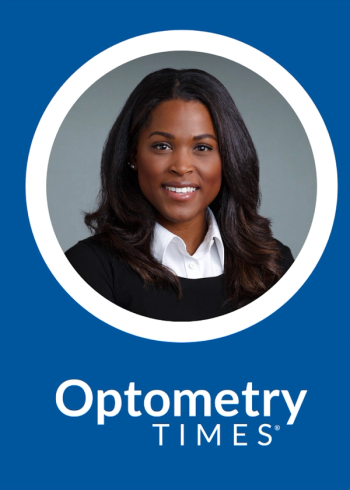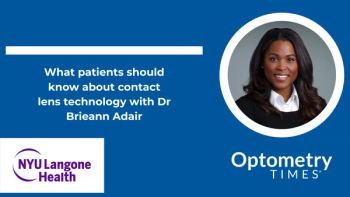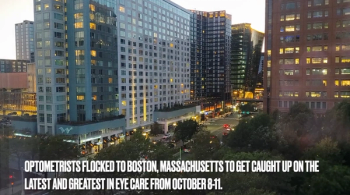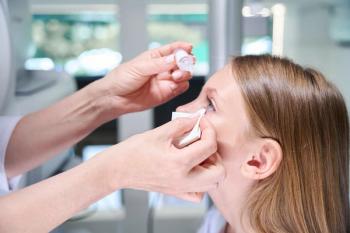
- August digital edition 2020
- Volume 12
- Issue 8
3 reasons to fit kids with contact lenses
Age is nothing but a number when deciding when kids should wear contact lenses
A frequent parent question to eyecare providers is, “When is the appropriate age my child can begin wearing contact lenses?”
I think that optometrists should be proactive instead of reactive. ODs should be the ones probing the question to parents about their children wearing contact lenses. In my experience, about half the time the parent will be shocked and say, “I did not know my child could wear contact lenses at this age,” or “Isn’t she too young to start now?”
3 reasons for kids to wear contact lenses
There are many reasons why children should wear contact lenses at an earlier age.
1. Bullying and self-esteem
One reason is that still today children get teased or bullied for wearing glasses. In 2019 the National Center for Educational Statistics showed that 1 out of every 5 students report being bullied.1 According to another study, “children currently wearing glasses or with a history of wearing eye patches were 35 percent to 37 percent more likely to be victims of physical or verbal bullying, even after adjustment for social class and maternal education.”2
At a youth detention center for juveniles from 12 to 18 years old, more adolescents incarcerated for criminal activity (35 percent) had uncorrected refractive errors as compared to a comparable population in the public school system (22 percent).3
Contact lenses in children can help boost their egos, give children more confidence in the classroom and in athletic performance, and even minimize the chance of becoming a victim of bullying.
In the Correction of Myopia Evaluation Trial (COMET) study, researchers found that children who chose to wear contact lenses after 5 years of eyeglass use had higher self-esteem compared to children who remained in glasses both preceding and following contact lens use.4
Other research showed that myopic children wearing contact lenses evaluate their physical appearance, athletic skills, and social interactions more favorably than children who wear glasses.5,6
Pandemic conditions now require wearing facial masks—glasses continually fog up. Switching to contact lenses is one way to alleviate this problem.
2. Breakage or loss
The second reason for children to wear contact lenses is the fact that kids simply break or lose their glasses frequently—sometimes multiple pairs within the same year.
When this happens, parents may not be able to afford to get a replacement pair or their vision coverage may not cover another pair until the following year. In these situations, children are left visually impaired and may not pay attention in class if they are sitting in the back of the classroom.
Some children bring their glasses to school only to leave them in their backpacks all day. By not wearing glasses, their prescriptions can potentially progress, especially if children are myopic. Myopia management is a hot topic, and with schools closed and children learning from home, kids’ screen time has increased dramatically.
Frequently, parents will ask if their kids can get laser-assisted in-situ keratomileusis (LASIK) to avoid wearing glasses. ODs know that LASIK cannot be performed on children under the age of 18 as well as the fact that simply wiping away the refractive error does not minimize the risk factors of early cataract onset, glaucoma, and myopic maculopathy from developing.
Center-distance soft multifocal contact lenses or orthokeratology lenses are great options for children as well as myopia management. Studies have shown that children as young as 8 years old are able to wearcorneal reshaping7-11 and soft contact lenses.6,12-15
In November 2019 the United States Food and Drug Administration (FDA) approved MiSight (CooperVision), a daily disposable soft multifocal center distance contact lens for myopia management for ages 8 to 12. There is another daily disposable lens out in the market to help manage myopia with a higher add power called NaturalVue (Visioneering Technologies) and with a higher range of powers from -0.25 D to -12.00 D. With orthokeratology this lens is worn when the child goes to sleep and then removed throughout the day so the child will be able to see without the use of glasses or contact lenses. Both corneal reshaping and NaturalVue contact lenses are considered off-label for myopia management and each have their own benefits to help children minimize progression.
3. Sports and activities
The third reason for kids to wear contact lenses is activity. Many children are involved in sports, dance, gymnastics, karate, etc. Many times children play these activities without wearing glasses because they do not realize they need glasses for their sports, and not wearing glasses increases the risk of injury because their reaction time is slower. Contact lenses can also help kids visually both centrally and peripherally as well as with contrast sensitivity.
In 2018, Time magazine named Acuvue Oasys with Transitions (Johnson & Johnson Vision) as a best invention in sports and fitness. I have found in my practice that this light-adapting lens has helped athletes who play outdoor sports to perform better in bright, sunny days.
The American Optometric Association recommends that children get comprehensive eye examinations yearly and as soon as 6 months of age.15 Contact lens examinations also need to be renewed yearly because the FDA recognizes contact lenses as Class II or Class III medical devices.16
When it comes to contact lenses, age is nothing but a number.
References
1. National Center for Education Statistics. Student Reports of Bullying and Cyber-Bullying: Results From the 2013 School Crime Supplement to the National Crime Victimization Survey. Available at: https://nces.ed.gov/pubs2015/2015056.pdf. Accessed 7/28/20.
2. Horwood J, Waylen A, Herrick D, Williams C, Wolke D. Common visual defects and peer victimization in children. Invest Ophthalmol Vis Sci. 2005 Apr;46(4):1177-81.
3. Harrie RP, Harrie PC. The prevalence of uncorrected refractive errors in adolescents incarcerated in a youth detention center. Child Adolesc Soc Work J. 2016 June;33:273-277.
4. Dias L, Manny RE, Weissberg E, Fern KD. Myopia, contact lens use and self esteem. Ophthalmic Physiol Opt. 2013 Sep;33(5):573-80.
5. Terry RL, Soni PS, Horner DG. Spectacles, contact lenses, and children’s self-concepts: a longitudinal study. Optom Vis Sci. 1997 Dec;74(12):1044-1048.
6. Walline JJ, Jones LA, Sinnott L, Chitkara M, Coffey B, Jackson JM, Manny RE, Rah MJ, Prinstein MJ; ACHIEVE Study Group. Randomized trial of the effect of contact lens wear on self-perception in children. Optom Vis Sci. 2009 Mar;86(3):222–232.
7. Cho P, Cheung SW. Retardation of myopia in orthokeratology (ROMIO) study: a 2-year randomized clinical trial. Invest Ophthalmol Vis Sci. 2012 Oct 11;53(11):7077-85.
8. Cho P, Cheung SW, Edwards M. The longitudinal orthokeratology research in children (LORIC) in Hong Kong: a pilot study on refractive changes and myopic control. Curr Eye Res. 2005 Jan;30(1):71-80.
9. Santodomingo-Rubido J, Villa-Collar C, Gilmartin B, Gutiérrez-Ortega R. Myopia control with orthokeratology contact lenses in Spain: refractive and biometric changes. Invest Ophthalmol Vis Sci. 2012 Jul 31;53(8):5060-5.
10. Walline JJ, Jones LA, Sinnott LT. Corneal reshaping and myopia progression. Br J Ophthalmol. 2009 Sep;93(9):1181-5.
11. Walline JJ, Rah MJ, Jones LA. The Children’s Overnight Orthokeratology Investigation (COOKI) pilot study. Optom Vis Sci. 2004 Jun;81(6):407-13.
12. Rah MJ, Walline JJ, Jones-Jordan LA, Sinnott LT, Jackson JM, Manny RE, Coffee B, Lyons S; ACHIEVE Study Group. Vision specific quality of life of pediatric contact lens wearers. Optom Vis Sci. 2010 Aug;87(8):560-6.
13. Walline JJ, Gaume A, Jones LA, Rah MJ, Manny RE, Bernsten DA, Chitkara M, Kim A, Quinn N. Benefits of contact lens wear for children and teens. Eye Contact Lens. 2007 Nov;33(6 Pt 1):317-21.
14. Walline JJ, Long S, Zadnik K. Daily disposable contact lens wear in myopic children. Optom Vis Sci. 2004 Apr;81(4):255-9.
15. American Optometric Association. Recommended Eye Examination Frequency for Pediatric Patients and Adults. Available at: https://www.aoa.org/patients-and-public/caring-for-your-vision/ comprehensive-eye-and-vision examination/recommendedexamination- frequency-for-pediatric-patients-and-adults. Accessed 7/28/20.
16. American Optometric Association. Healthy Vision and Contact Lenses. Available at: https://www.aoa.org/patients-and-public/ caring-for-your-vision/contact-lenses. Accessed 7/28/20.
Articles in this issue
over 5 years ago
3 steps to managing scleral lens patients with allergiesover 5 years ago
Dry eye intranasal spray stimulates the trigeminal nervesover 5 years ago
Technology for optometry post COVID-19over 5 years ago
5 essential truths to treating dry eye diseaseover 5 years ago
How the tear film affects IOL measurementsover 5 years ago
The evolving standard of care in AMDover 5 years ago
Optimizing ocular blood flow in glaucoma managementover 5 years ago
The time is now for optometry and telehealthover 5 years ago
IPL: The science of comfort and safetyNewsletter
Want more insights like this? Subscribe to Optometry Times and get clinical pearls and practice tips delivered straight to your inbox.


















































.png)


